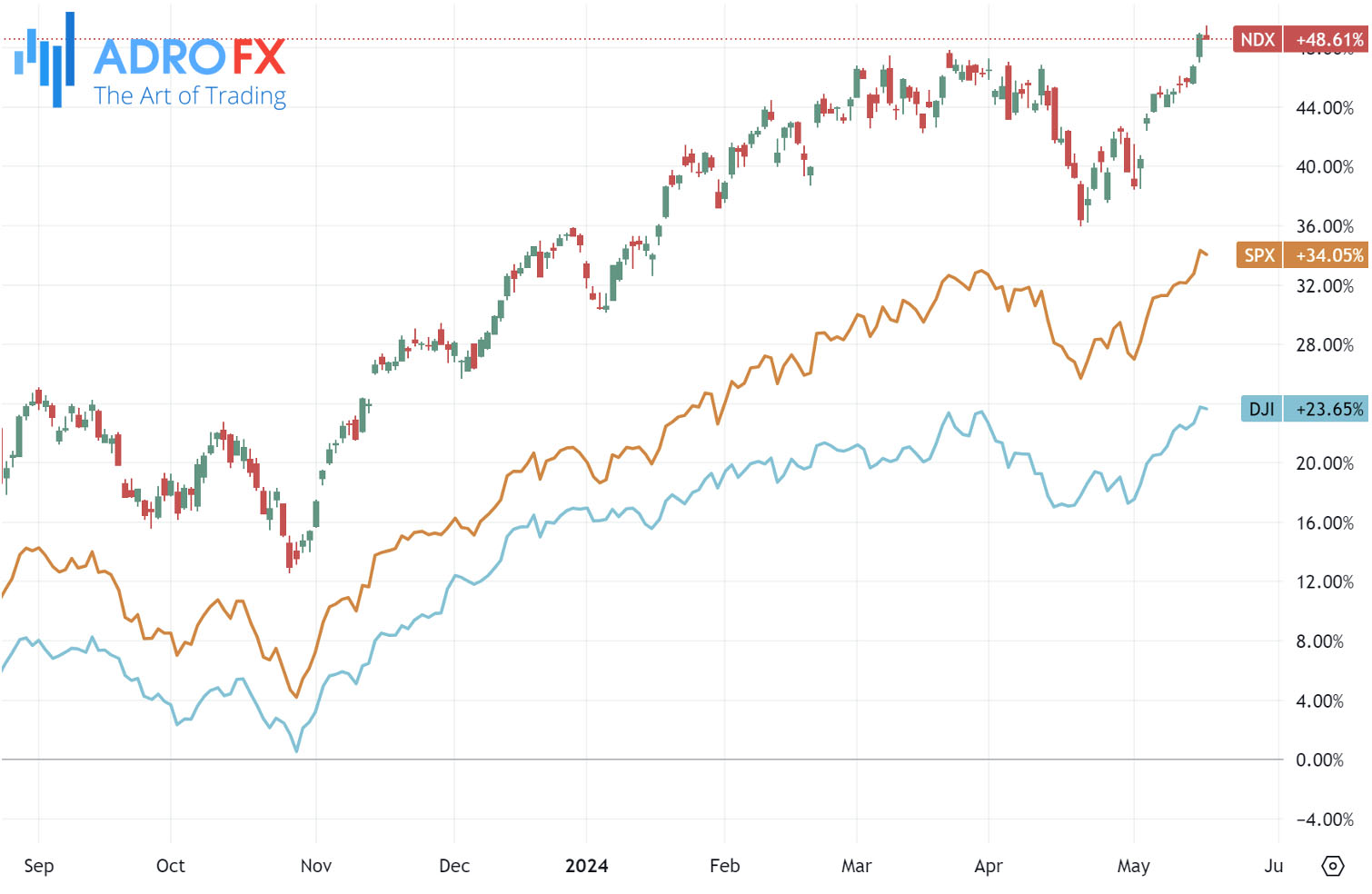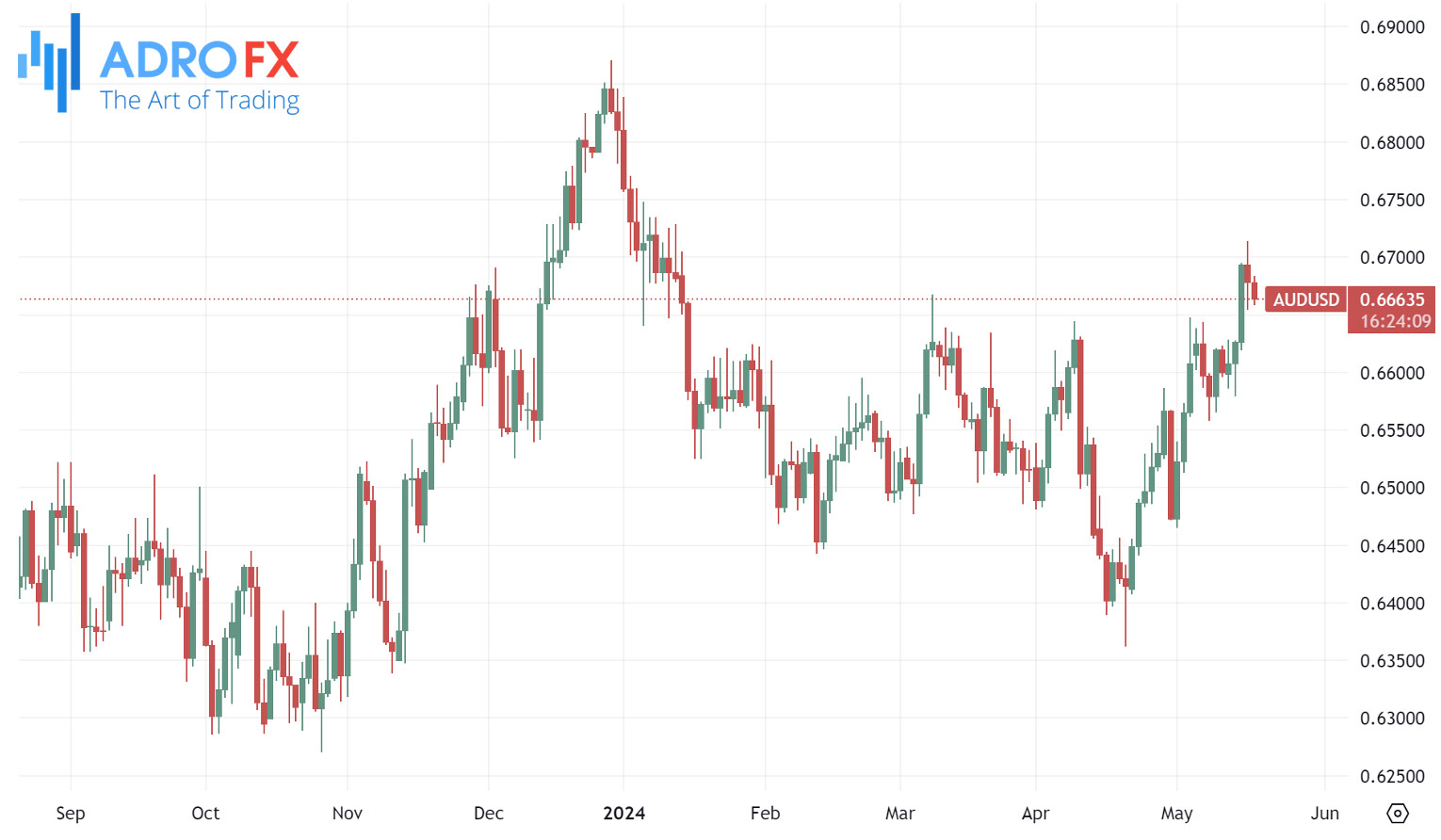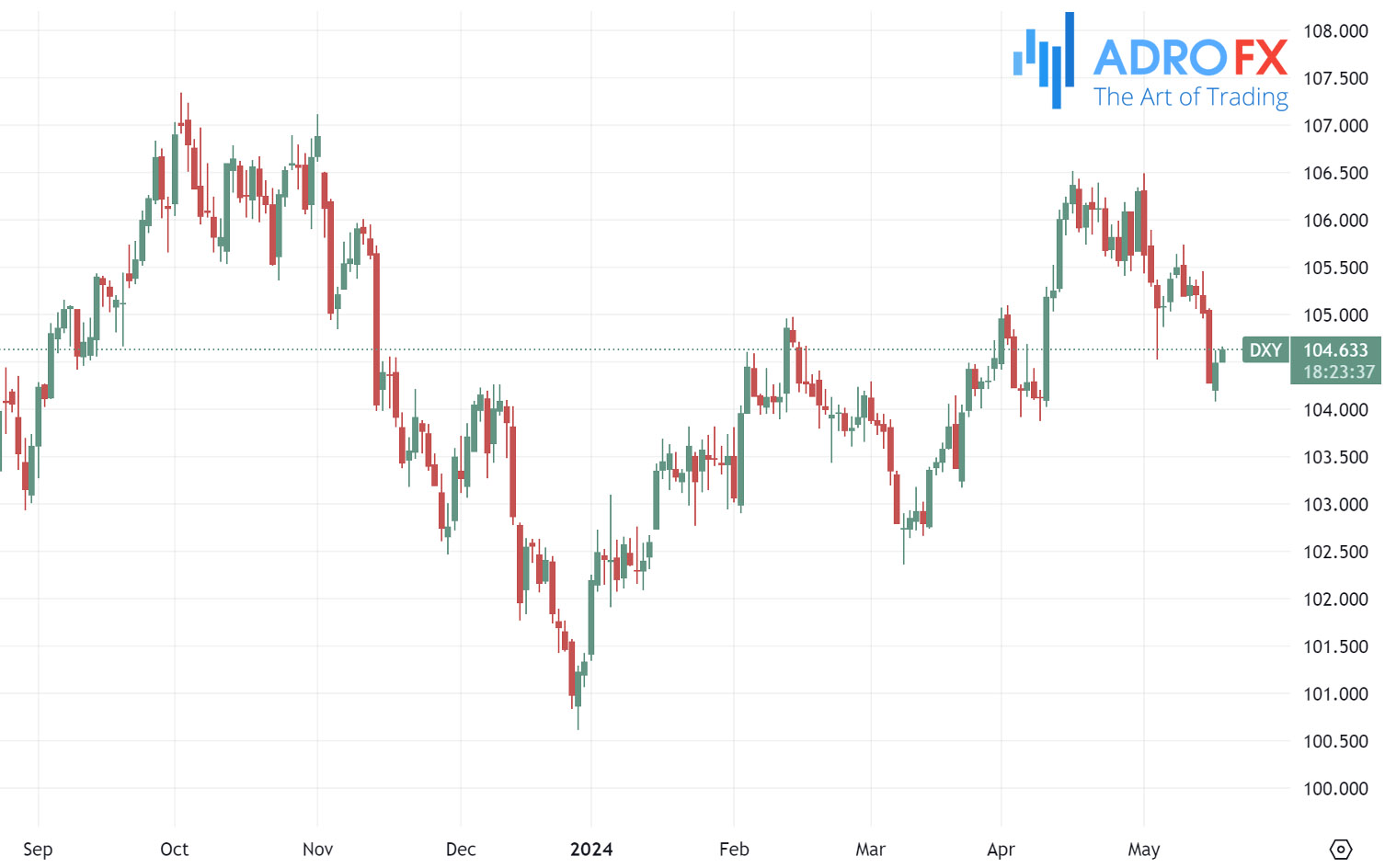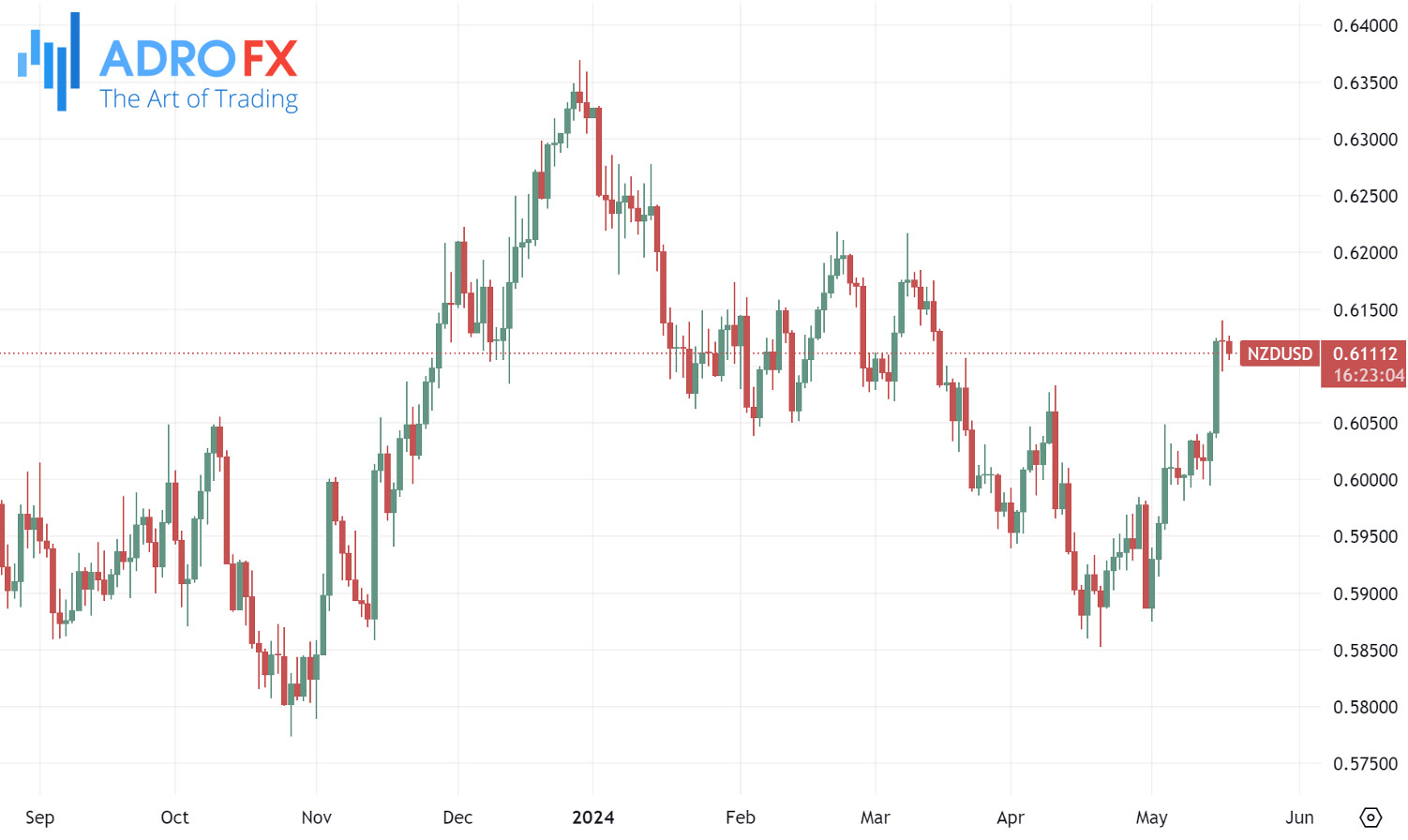Dow's Record Run Stumbles Near 40,000 Milestone Amid Treasury Yields and Walmart Surge | Daily Market Analysis

Key events:
- Eurozone - ECB's De Guindos Speaks
- UK - BoE MPC Member Mann Speaks
- Eurozone - CPI (YoY) (Apr)
- USA - Fed Kashkari Speaks
- USA - Fed Waller Speaks
- USA - FOMC Member Daly Speaks
Thursday marked a reversal for the Dow, halting a two-day winning streak, even as it briefly surpassed the historic 40,000 milestone for the first time, amidst considerations of a resurgence in Treasury yields and Walmart's rally.
The Dow Jones Industrial Average experienced a decline of 38 points, equivalent to 0.1%, after reaching an unprecedented peak of 40,051.05 earlier in the session. Similarly, the S&P 500 and the NASDAQ Composite both retreated, down by 0.2% and 0.3%, respectively, despite registering intraday record highs.

Meanwhile, Alibaba Group's Hong Kong shares soared to a seven-month pinnacle on Friday following news of Michael Burry's investment firm significantly increasing its stake in the e-commerce behemoth, along with several other Chinese counterparts.
Alibaba surged by over 7% to HK$85.80, marking its highest level since October 2023, positioning the stock as the top performer on the Hang Seng index, which concurrently rose by 0.9%.

Scion Asset Management, helmed by Michael Burry, notably augmented its holdings in Alibaba and JD.com, with the latter emerging as its largest holding in the initial quarter, as revealed by a 13-F filing earlier in the week. Scion magnified its stake in JD by an impressive 80%.
Alibaba claimed the fund's second-largest position, with Scion bolstering its investment in the e-commerce titan by an additional 50,000 shares, now totaling 125,000 shares and valued at approximately $9 million.
Friday witnessed a bearish tilt in the gold price after it pulled back from nearly touching the $2,400 mark. The recent upswing in precious metals, supported by softer-than-expected US inflation data for April, fueled speculations of potential rate cuts from the US Federal Reserve. However, the cautious stance adopted by Fed officials on Thursday, indicating a preference for maintaining higher borrowing costs for an extended period, suggested that the central bank might not rush into interest rate cuts this year. Consequently, this bolstered the US Dollar across the board and exerted downward pressure on gold, as higher interest rates could diminish overall investment interest in non-yielding assets like gold.

Meanwhile, the Australian Dollar remained under downward pressure for the second consecutive session, largely influenced by recent mixed economic indicators from China released on Friday. The Aussie Dollar had already faced headwinds following the release of Australia's employment figures on Thursday, which painted a mixed picture. Any shifts in the Chinese economy could have significant ramifications for the Australian market, given the close trade ties between the two nations.

The decline in the Australian Dollar was further accentuated by the drop in Australia's 10-year government bond yield to approximately 4.2%, its lowest level in a month. This decline in bond yields was triggered by the domestic jobs report, which revealed an unexpected slowdown in wage growth during the first quarter. The subdued wage growth led investors to discount the possibility of any interest rate hikes by the Reserve Bank of Australia.
The US Dollar Index rebounded from its multi-week low of 104.08 recorded on Thursday, propelled by the Federal Reserve's cautious stance on inflation and the outlook for potential rate adjustments in 2024.

In the Asian session on Friday, the NZD/USD pair extended its losses to around 0.6110, influenced by the recovery of the US Dollar after touching multi-week lows. On the New Zealand front, the PPI inputs and outputs witnessed an uptick in the first quarter. PPI input prices exceeded expectations, rising by 0.7%, while PPI output prices increased by 0.9%. These better-than-expected PPI figures could offer some support for the New Zealand Dollar, potentially mitigating the downside pressure on the NZD/USD pair.

According to Stats NZ, electricity and gas contributed significantly to the rise in output prices, recording an 8.8% quarter-on-quarter increase. Energy costs also made a substantial impact on input prices, climbing by 11.6%. Additionally, insurance costs played a role in the overall increase.
The USD/CAD pair traded on a firmer note around 1.3620 during the early Asian trading hours on Friday. Canada's Manufacturing Sales witnessed a 2.1% month-on-month decline in March, weaker than the market's expectation of a 1.4% decrease, as reported by Statistics Canada on Wednesday. Meanwhile, the prolonged rebound in oil prices could buoy the commodity-linked Canadian Dollar and limit the upside potential of the pair, considering Canada's position as the largest oil exporter to the United States.

With no major economic data releases scheduled from the US, market participants are likely to focus on Fedspeak for insights into the future trajectory of the Fed's monetary policy. Fed officials Kashkari, Waller, and Daly are scheduled to speak later on Friday.









